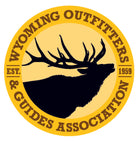SAFETY IN THE WOODS PART #1
If you like to go camping and be in contact with nature, then, know how to take care of the dangers in the forest. Camping in the forest will be safer if you know how to act in the face of danger.
The moment you realize that you are lost, before doing something, stop. Take a deep breath and remain calm. 
FOLLOW THESE GUIDELINES FOR SAFETY IN THE WOODS
ORIENT YOURSELF
The place you are in will become your “zero point”. Find a way to mark the spot, whether using a piece of cloth, a pile of stones, a sheet of paper or anything else that can be seen from a distance.
STAY IN ONE PLACE
This increases your chances of being found and also reduces the amount of energy your body uses, and the amount of water and food you will need.
GIVE SIGNS OF YOUR LOCATION
Make whistling noise, screaming, singing or hitting two rocks. If you can, mark your location in a way that can be visible from the sky.
You can use a campfire to send a signal. The universal distress signal is created with three bonfires in a straight line or three bonfires that form a triangle.
LOOK FOR A GOOD SOURCE OF WATER
In a survival case, you can last up to three days without drinking water, but at the end of the second day you will not feel very well; find water before that.
PURIFY THE WATER
A rudimentary method of purifying water is to take a pot and heat the water. To kill the bacteria effectively with this method, the water should boil for at least three minutes. You can also put water in a clear plastic bottle and put it in the sun for six hours to kill most organisms.
SEARCH OR CREATE A REFUGE
If you do not have an adequate shelter, you will be totally exposed to weather conditions and run the risk of suffering hypothermia or heat stroke, depending on the weather.
LOOK FOR SAFE FOOD
Keep in mind that most healthy adults can survive up to three weeks without food unless it’s cold. It is better to be hungry and healthy instead of sick.










